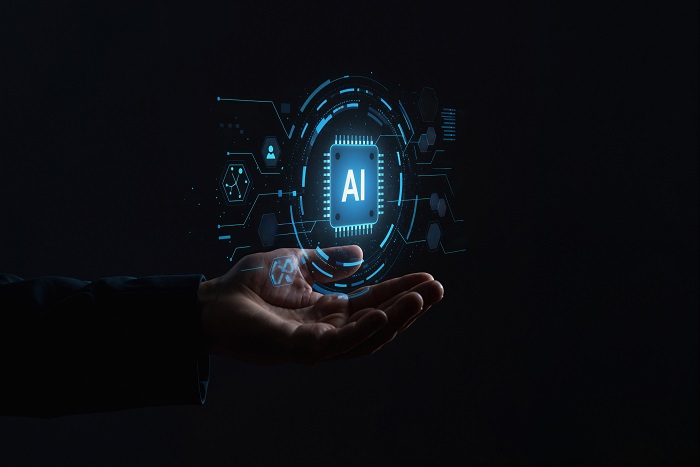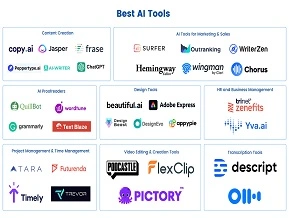Data Analytics and AI: What is the Difference and Why It Matters?
What are Data Analytics and AI, and How Do They Differ?
Data analytics and AI are two transformative technologies reshaping industries today. While they often intersect, each discipline has distinct objectives and methods that define their unique roles in handling data.
What is Data Analytics?
Data analytics is the process of examining and interpreting historical data to extract meaningful insights. Its primary focus is on analysing past events or behaviours to inform decision-making, identify trends, and optimize business processes. By utilizing statistical techniques, data visualization, and various analytical tools, data analytics helps organizations understand what happened and why it happened. This retrospective approach enables companies to make data-driven decisions grounded in evidence from historical datasets.
What is Artificial Intelligence?
Artificial intelligence (AI) aims to mimic human cognition by enabling machines to perform tasks that typically require human intelligence. These tasks include learning, reasoning, problem-solving, and understanding natural language. AI systems leverage algorithms, machine learning, and neural networks to analyse data, make predictions, and even adapt over time without explicit programming. Unlike data analytics, AI is forward-looking and often designed to automate complex processes, generate new insights, or simulate human-like decision-making.
Key Differences between Data Analytics and AI
While both fields handle data extensively, their objectives diverge significantly. Data analytics concentrates on interpreting existing data to provide clarity and understanding of past occurrences. In contrast, AI focuses on creating intelligent systems that can autonomously learn from data and improve performance over time. Methods used in data analytics tend to be descriptive and diagnostic, whereas AI employs predictive and prescriptive techniques.
In summary, artificial intelligence data analytics overlap in their use of data but serve different purposes — one for understanding the past, the other for creating intelligent actions in the future.
How Does Artificial Intelligence Enhance Data Analytics?
Data analytics and AI together form a powerful combination that transforms the way organizations process and interpret data. Artificial intelligence significantly enhances data analytics by introducing automation, advanced predictive capabilities, and deeper insights that were previously difficult to achieve through traditional methods.
AI-Powered Automation Accelerates Data Processing
One of the most significant ways AI enhances data analytics is through automation. AI algorithms can quickly clean, organize, and process vast amounts of data, reducing the time and effort required by human analysts. This acceleration allows companies to analyse data faster and focus on extracting actionable insights rather than spending excessive time on routine tasks.
Machine Learning Improves Predictive Analytics
Machine learning, a subset of AI, plays a vital role in improving predictive analytics. By learning patterns from historical data, machine learning models can forecast future trends, behaviours, and outcomes with increasing accuracy. This predictive power helps businesses anticipate market changes, customer preferences, and operational risks, making data-driven decisions more proactive and strategic.
Natural Language Processing Enables Deeper Insight Extraction
Natural language processing (NLP), another AI technique, enhances data analytics by enabling the analysis of unstructured data such as text, social media posts, and customer feedback. NLP allows systems to interpret, categorize, and extract meaningful information from language-based data, providing richer and more nuanced insights that traditional analytics might overlook.
Real-Time Analytics for Faster Decision-Making
Artificial intelligence data analytics also facilitates real-time data analysis. AI-powered systems can process streaming data on the fly, providing up-to-date insights that support faster decision-making. This capability is crucial in dynamic environments where timely information can create competitive advantages.
In summary, the integration of AI into data analytics not only accelerates and refines the analysis process but also expands its scope, enabling organizations to unlock deeper value from their data.
What Core Skills are Needed for Professionals in Data Analytics and AI?
Professionals working in data analytics and AI require a diverse skill set that combines technical expertise with analytical thinking and communication abilities. These core skills enable them to manage complex data, build intelligent models, and translate findings into actionable insights.
Strong Foundation in Statistics and Mathematics
A solid understanding of statistics and mathematics is fundamental for anyone in data analytics or AI. Concepts such as probability, linear algebra, calculus, and statistical inference provide the theoretical foundation necessary to analyse data accurately, develop algorithms, and interpret model results. This knowledge helps professionals design experiments, validate findings, and ensure the reliability of their conclusions.
Proficiency in Programming Languages like Python and SQL
Programming skills are essential for handling data and implementing AI models. Python, with its extensive libraries like pandas, NumPy, and scikit-learn, is widely used for data manipulation, analysis, and machine learning. SQL is equally important for querying databases and extracting relevant datasets efficiently. Mastery of these languages allows professionals to automate tasks, process large datasets, and build scalable analytical solutions.
Experience with AI Techniques Such as Machine Learning and Neural Networks
AI professionals must be familiar with various AI techniques, including machine learning algorithms and neural networks. This expertise enables them to develop models that can learn from data, recognize patterns, and make predictions. Understanding these methods helps in selecting the right approach for different types of data problems and improving model performance through tuning and optimization.
Ability to Visualize and Communicate Data Insights Effectively
Beyond technical skills, the ability to visualize data and communicate insights clearly is critical. Using tools like Tableau, Power BI, or matplotlib, professionals can create compelling visualizations that highlight key trends and findings. Effective communication ensures that data-driven recommendations are understood and adopted by decision-makers.
In conclusion, a combination of statistical knowledge, programming proficiency, AI expertise, and strong communication skills forms the core skill set for success in the fields of data analytics and AI.
In What Ways Do Artificial Intelligence Data Analytics Impact Business Decisions?
Artificial intelligence data analytics is transforming how businesses make decisions by providing deeper insights, increasing efficiency, and enabling more strategic actions. This integration of AI with data analytics empowers organizations to harness their data more effectively and gain a competitive edge.
Enables More Accurate Forecasting and Trend Analysis
AI-powered analytics tools can analyse vast amounts of historical and real-time data to produce highly accurate forecasts. By identifying patterns and trends that might be too complex for traditional methods, AI helps businesses predict future demand, market shifts, and consumer behaviour. This enhanced forecasting capability supports better planning and resource allocation, reducing risks and improving outcomes.
Automates Routine Analytics Tasks, Freeing Up Human Resources
Another significant impact is the automation of routine data analytics tasks such as data cleaning, report generation, and basic pattern detection. This automation allows data analysts and business professionals to focus on higher-value activities like strategy development and problem-solving. As a result, companies can make faster decisions and optimize their workforce efficiency.
Identifies Hidden Patterns That Humans Might Miss
AI excels at uncovering subtle and complex patterns within large datasets that human analysts might overlook. These hidden insights can reveal new market opportunities, potential risks, or operational inefficiencies. By bringing these findings to light, AI-driven analytics helps businesses innovate and stay ahead in competitive markets.
Supports Personalized Marketing and Customer Experience Strategies
Personalization is another area where AI data analytics has a profound impact. By analysing customer data in detail, AI enables businesses to create highly tailored marketing campaigns and personalized experiences. This targeted approach increases customer engagement, loyalty, and ultimately drives revenue growth.
In summary, artificial intelligence data analytics significantly enhances business decision-making by improving accuracy, automating processes, revealing hidden insights, and enabling personalized strategies that drive success.
Why is It Important to Understand the Difference Between Data Analytics and AI?
Understanding the difference between data analytics and AI is essential for organizations and professionals alike. Clarifying this distinction helps set realistic expectations, optimize resources, and guide effective decision-making in both projects and careers.
Clarifies Expectations for Project Goals and Outcomes
Knowing whether a project focuses on data analytics or AI clarifies its goals and expected outcomes. Data analytics projects typically aim to interpret historical data to generate insights, whereas AI projects focus on building intelligent systems capable of learning and automation. This clarity prevents confusion and ensures all stakeholders are aligned on what success looks like.
Helps Organizations Allocate Resources Effectively
When organizations understand the unique demands of data analytics versus AI, they can allocate budgets, personnel, and technology more effectively. Data analytics might require investments in data warehousing and visualization tools, while AI initiatives often need specialized hardware and expertise in machine learning algorithms. Proper resource allocation enhances project efficiency and return on investment.
Guides Professionals in Choosing the Right Career Path
For individuals, distinguishing between data analytics and AI can guide career choices. Data analytics professionals often specialize in statistics, data visualization, and database management, while AI experts focus on programming, algorithm development, and neural networks. Understanding these differences helps professionals acquire the right skills and pursue fulfilling career paths aligned with their interests.
Encourages Appropriate Tool and Technology Adoption
Recognizing the differences also promotes the adoption of appropriate tools and technologies. Organizations can avoid misapplying AI tools where simple analytics would suffice, or vice versa, leading to more streamlined workflows and better outcomes.
In summary, a clear understanding of the distinction between data analytics and AI is crucial for managing expectations, resource planning, career development, and technology selection, ensuring success in this rapidly evolving digital landscape
What Challenges Arise When Integrating AI into Data Analytics?
Integrating artificial intelligence into data analytics offers great potential but also presents several challenges that organizations must carefully address. These challenges span technical, ethical, and operational aspects that can impact the effectiveness of AI-driven analytics.
Data Quality and Pre-processing Complexities
One of the primary challenges in combining AI with data analytics is ensuring data quality. AI models rely heavily on clean, accurate, and well-prepared data. However, real-world data is often messy, incomplete, or inconsistent, requiring extensive pre-processing. This stage can be time-consuming and complicated, as poor data quality directly affects the performance and reliability of AI models.
Computational Resource Requirements for AI Models
AI algorithms, particularly deep learning and neural networks, demand significant computational power and memory. Integrating these models into analytics workflows means organizations must invest in specialized hardware such as GPUs or cloud computing resources. Managing these resource requirements can be costly and technically challenging, especially for smaller companies.
Addressing Bias and Ensuring Ethical AI Use
Another critical challenge is mitigating bias within AI models and promoting ethical use. AI systems can unintentionally learn and amplify existing biases present in training data, leading to unfair or inaccurate outcomes. Organizations must implement rigorous testing and monitoring protocols to identify bias and ensure AI-driven analytics adhere to ethical standards.
Balancing AI Automation with Human Oversight
While AI automation can streamline many analytics tasks, striking the right balance between automation and human oversight is essential. Overreliance on AI without expert review can lead to errors or misinterpretations. Human analysts are still needed to validate AI outputs, provide context, and make nuanced decisions that machines may not fully grasp.
In conclusion, integrating AI into data analytics involves overcoming challenges related to data quality, computational resources, bias, and the need for balanced automation. Addressing these issues is vital for leveraging the full potential of artificial intelligence data analytics effectively and responsibly.
How Can You Start Building Expertise in Data Analytics and AI?
Building expertise in data analytics and AI is an exciting journey that combines learning theoretical concepts with practical application. With the abundance of resources available today, getting started is more accessible than ever.
Learn Foundational Concepts through Online Courses and Tutorials
The first step to developing skills in data analytics and AI is to build a strong foundation. Numerous online platforms offer courses and tutorials covering key topics such as statistics, machine learning, programming, and data visualization. These courses provide structured learning paths that help beginners understand core principles and methodologies.
Gain Hands-On Experience with Real Datasets and Projects
Theory alone isn’t enough—practical experience is essential. Working with real datasets allows you to apply what you’ve learned and develop problem-solving skills. Many websites offer open datasets and project ideas that range from beginner to advanced levels. Completing projects helps solidify knowledge and builds a portfolio that can showcase your abilities to potential employers.
Use AI Frameworks and Analytics Tools to Practice Skills
To become proficient, it’s important to get comfortable with popular AI frameworks like TensorFlow or PyTorch, and data analytics tools such as Python libraries (pandas, NumPy) or visualization software like Tableau. Practicing with these tools enhances your ability to build models, analyse data efficiently, and communicate results effectively.
Engage with Communities and Stay Updated on Industry Trends
Joining online forums, attending webinars, and participating in workshops can connect you with other learners and professionals. Staying updated on the latest industry trends and breakthroughs ensures your skills remain relevant in this fast-evolving field.
By combining structured learning, hands-on practice, and active community engagement, you can steadily build expertise in data analytics and AI and position yourself for a successful career in this dynamic domain.
Conclusion
The future of data analytics and AI lies in their increasing convergence, enabling organizations to generate smarter, more actionable insights. This integration is driving a growing demand for professionals with hybrid skill sets who can navigate both fields effectively. Continuous innovation in AI and analytics technologies offers businesses significant competitive advantages, making adaptation crucial. As these fields evolve rapidly, lifelong learning becomes essential for staying relevant and thriving in this dynamic landscape. Embracing these changes will empower individuals and organizations to unlock the full potential of their data.












